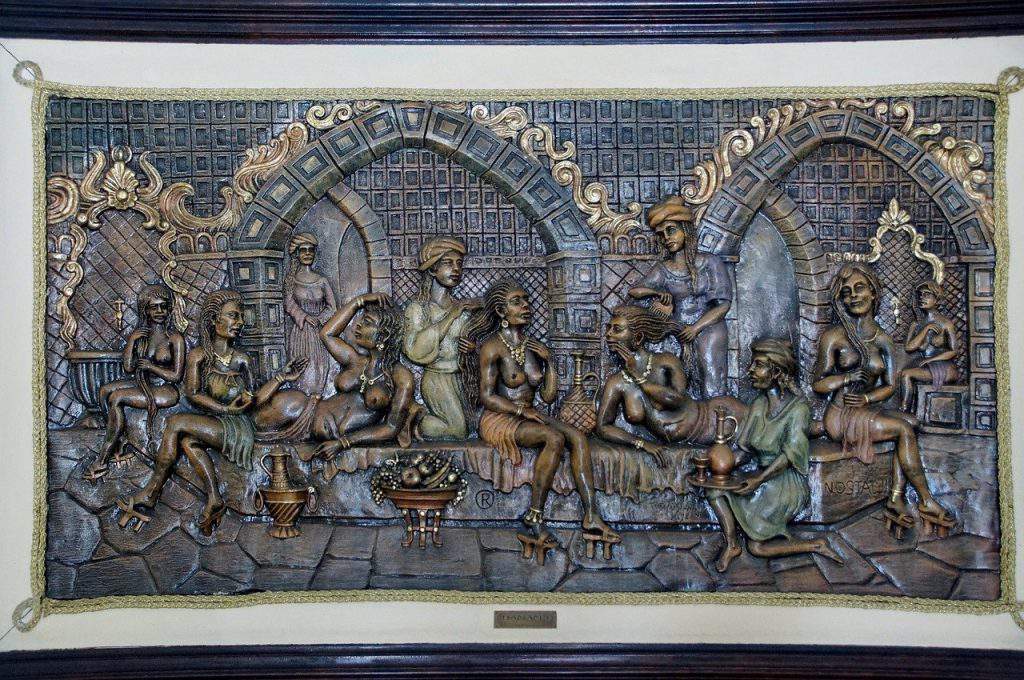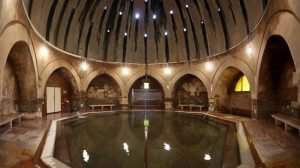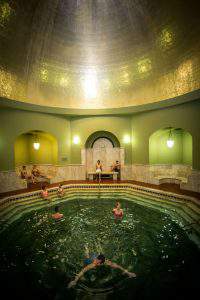The history of the Turkish baths of Hungary

According to termalfurdo.hu, the 150 years of Turkish rule left deep marks in the Hungarian history. It might sound strange, but the era had positive effects as well, for instance, the spreading of baths, out of which several still function in Budapest and Eger. But how were these built and what was their role? This is the story of Turkish baths in Hungary.
Many contemporary European travelers reported on baths in the Turkish in a praising way, because they were all dazzled by their architectural style and fantastic health benefits. Since the Turks used them for social and clearing aims, they were always built in the centre, close to religious venues like mosques, turbes and minarets. The appropriate water temperature was especially important for them, so they tried to build the baths as close to thermal springs as possible.

Why were they built?
Cleaning baths play a significant role in the Islamic religion. According to the Coran, both still water and running water can be used for this aim. Prophet Muhammad emphasized the role of bathing in potence. Moreover, they believed that the purgation of the soul and body were necessary. Bathing masters and maids helped in the process. Even though the joint bathing of men and women was prohibited, the institutions were the prominent venues of social life. Following the rules, the halls were built in the following order: hot, warmish, cold, dry. All of this was completed with skin and hair care.

The architectural masterpiece
The Turks already had well-developed systems for canalage and heating in the 16th century. The heating of the pool area and other watery halls were provided by the hot thermal water directly from the pools, and indirectly from the walls through clay pipes. When designing steam baths, they also built boiler-rooms and heating furnaces to store cold springwater. The sealing of the pools was ensured by lead plates. But the most eye-catching solution was definitely the cupola-shaped roofing.
The layout always had a tripartition: first came the atrium, then the hall, and the bathing area last. The latter was filled with hot water by wall fountains, the floors were covered with marble, while there were seats along the walls. The pools found in the middle of the halls were usually octagon-shaped or circular. This central position was taken by marble platforms in the hamams.

Changes
The baths built by the Turks were used according to their original function even after the Ottoman conquerors left Hungary, because people realised their health benefits. For instance, they were frequently visited by soldiers, generals, but they were also the beloved venues of political conversations and conspiracies. The 20th century didn’t spare the Turkish baths, but thanks to the restorations they can be visited by anyone in Budapest and Eger. Out of the Turkish baths of Buda six has archaeological marks, out of which four still function as thermal baths (onetime Horosz Gate: Király Bath today, onetime Jesil direkli: Rudas Bath today, onetime Veli beg: Irgalmasok Veli Bej Bath today, onetime Kücsük: Rác Bath today).

The Turkish baths of Eger and Budapest
In the 16th century two baths operated in Székesfehérvér, while there were already three a decade later. Pécs also had three baths from the 16th century. Rüstem Pasha built a bath in Esztergom. Moreover, several Turkish baths functioned in Gyula, Szeged, Szekszárd, Bács, Becskerek, Hatvan and Lippa. Based on the estimations of Balázs Sudár, the Turks built 75 baths during their 150 years of rule. The ruins of the Valide Sultana Bath are under reconstruction in Eger, but if you happen to be passing by, you can enjoy the bath complex built around the onetime bath of Arnaut Pasha.
Featured image: Painting – Wiki Commons By Jean-Jacques Le Barbier
Ce: bm
Source: https://www.termalfurdo.hu/





